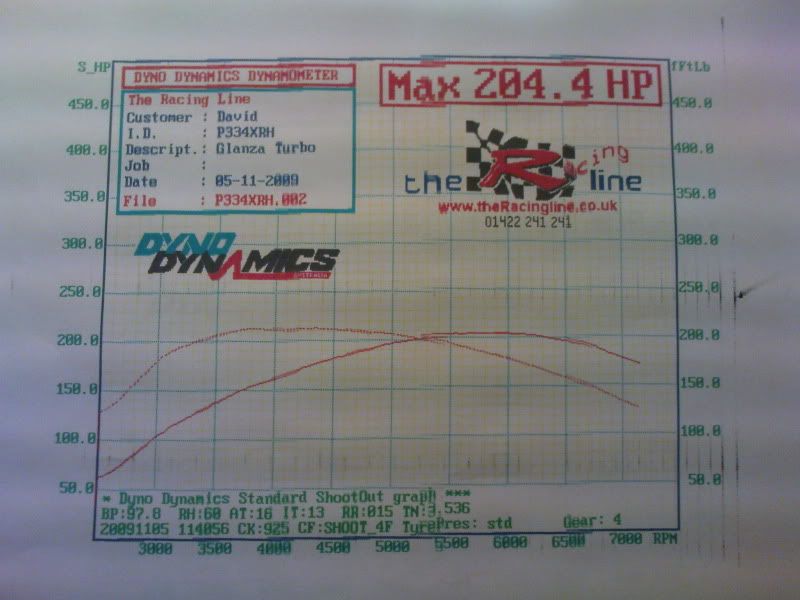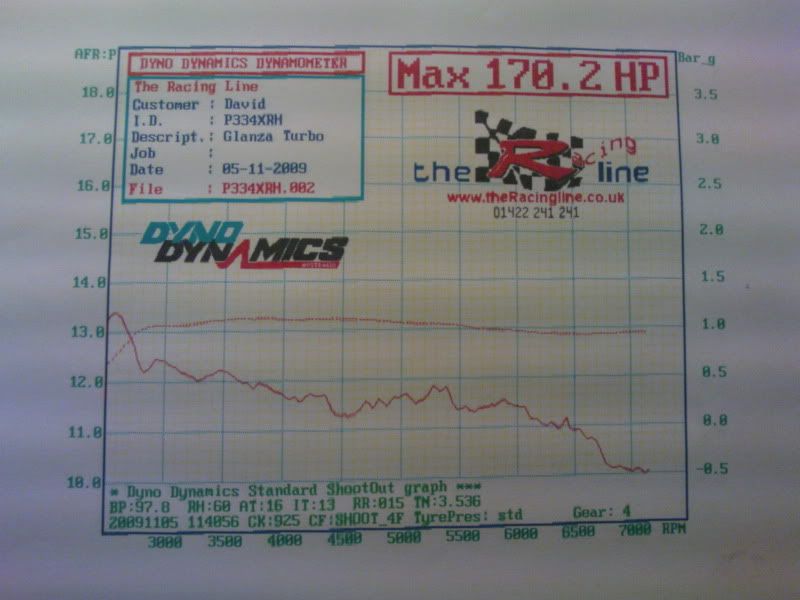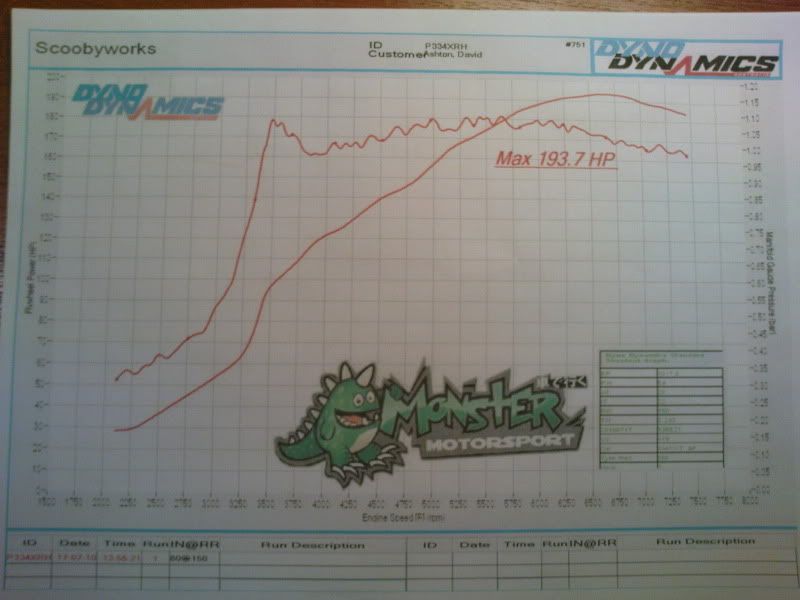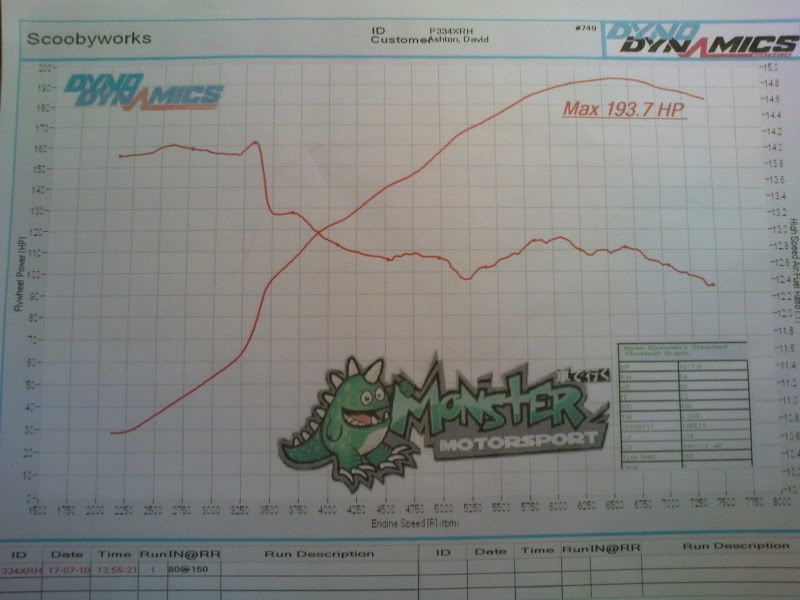DavidAshton
Member +
Some people may remeber my earlier thread from last year.....if not its below, 204.4 bhp from a OEM ct9.
http://www.toyotagtturbo.com/forums/showthread.php?t=57686
Was very unsure on he result but with the racing line's reputation and experience i tend not to doubt it. So the UKSC rolling road day came round, i ran the same setup exactly, maybe a touch less boost.
Very different results?
So im basically after some clarification from the rolling road experts what seem to be more realistic.....
Here are the graphs
bhp/torque


Boost


AFR


So questions are,
Racing line was run in 4th gear MM in 3rd, any difference?
Any ideas why all the torque has gone?
Boost initially peaks then drastically drops off on second boost graph, this never happens on the road?
Full Boost comes in nearly 1000rpm later the second boost graph, on the road its not this late, its the same as the first graph?
My afr's are in a totally different range, although the look similar, why?
Any ideas guys?
http://www.toyotagtturbo.com/forums/showthread.php?t=57686
Was very unsure on he result but with the racing line's reputation and experience i tend not to doubt it. So the UKSC rolling road day came round, i ran the same setup exactly, maybe a touch less boost.
Very different results?
So im basically after some clarification from the rolling road experts what seem to be more realistic.....
Here are the graphs
bhp/torque


Boost


AFR


So questions are,
Racing line was run in 4th gear MM in 3rd, any difference?
Any ideas why all the torque has gone?
Boost initially peaks then drastically drops off on second boost graph, this never happens on the road?
Full Boost comes in nearly 1000rpm later the second boost graph, on the road its not this late, its the same as the first graph?
My afr's are in a totally different range, although the look similar, why?
Any ideas guys?
